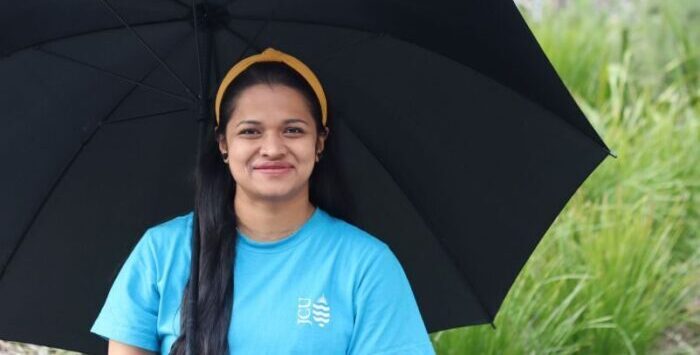Australian researchers working on smart irrigation systems have developed a way to choose the most accurate weather forecast out of those offered in the week leading up to a given day.
Dr Eric Wang, an Internet of Things (IoT) researcher at James Cook University (JCU) in Cairns, has been working on technology that enables farmers to make data-driven decisions.
“Every farmer would love to have a perfect weather forecast, but accurate forecasts are even more important to those who are embracing technology, and in particular IoT,” Wang said. “In farming, IoT involves smart devices talking to each other, to make recommendations such as when, where and how much to irrigate.
“That decision requires a lot of information, such as the needs of the particular crop, the current stage of its development, soil moisture and of course the weather. We’ve been looking for ways to go beyond the standard weather predictions, such as the Bureau of Meteorology’s (BOM) seven-day forecast, to help farmers and their smart systems decide whether they need to irrigate today.”
Under the supervision of Wang at JCU and Professor Wei Xiang at La Trobe University, PhD candidate Neethu Madhukumar has devised a hybrid system that has shown promise in improving the precision of rainfall forecasts.
“There’s more math in weather forecasting than most people probably realize,” said Madhukumar, who taught probability theory before she began her doctoral studies.
“When weather forecasters say they have consulted the models, that involves feeding data from satellites and sensors into mathematical models that are based on the physics of how air, heat and moisture behave,” she said.
Forecasters also apply expert judgment and experience to the task. Therefore, rather than trying to reinvent the wheel, Madhukumar’s goal was to find a way to determine the best forecast of those provided by the climate models in the week leading up to the day in question.
“You might assume that the forecast closest to the day in question will be the most reliable, but that turned out not to be the case,” she said. “We looked at ways to teach our artificial neural network to understand the relationships underlying all the data, to choose the best forecast.”
Madhukumar has developed a hybrid climate learning model (HCLM), which learns from a combination of the climate model data and whether or not it rains the following day.
First, a probability-based network evaluates multiple forecasts for different rainfall patterns. Then a deep-learning neural network reprocesses the forecasts to produce a better prediction for the next day.
“This combination of distilling knowledge from the climate models and using a deep learning network to refine the forecast has not been tried before,” said Xiang. “Using high-quality processed data from BoM, rather than raw observations, has helped the HCLM learn better.”
Madhukumar said the neural network examines the relationships between massive amounts of input data, processes it through many network layers, and learns from the mistakes made in earlier forecasts. “The higher the quality of data that’s input, the better the network learns,” she said.
“We trained the hybrid system by uploading 123,640 items of data, representing two years of BoM forecast and weather data for 10 sites across Australia’s six major climate zones. When we then tested our system across that same range of climate zones, the hybrid model outperformed the BoM’s climate models and three other experimental systems, making the fewest errors in its forecasts,” she explained.
The researchers are keen to stress that the work is not intended to replace BoM forecasts. “This work relies on BoM’s expertise, and the HCLM builds its rainfall predictions on the multiple forecasts produced by the BoM’s climate models,” Wang said. “We believe this model is the first to bring together the climate models, a probability network and a deep-learning neural network. Our next task will be to work on the other question every farmer has – if it’s going to rain tomorrow, how much are we likely to get?”
The research was published in the IEEE Internet of Things Journal.



